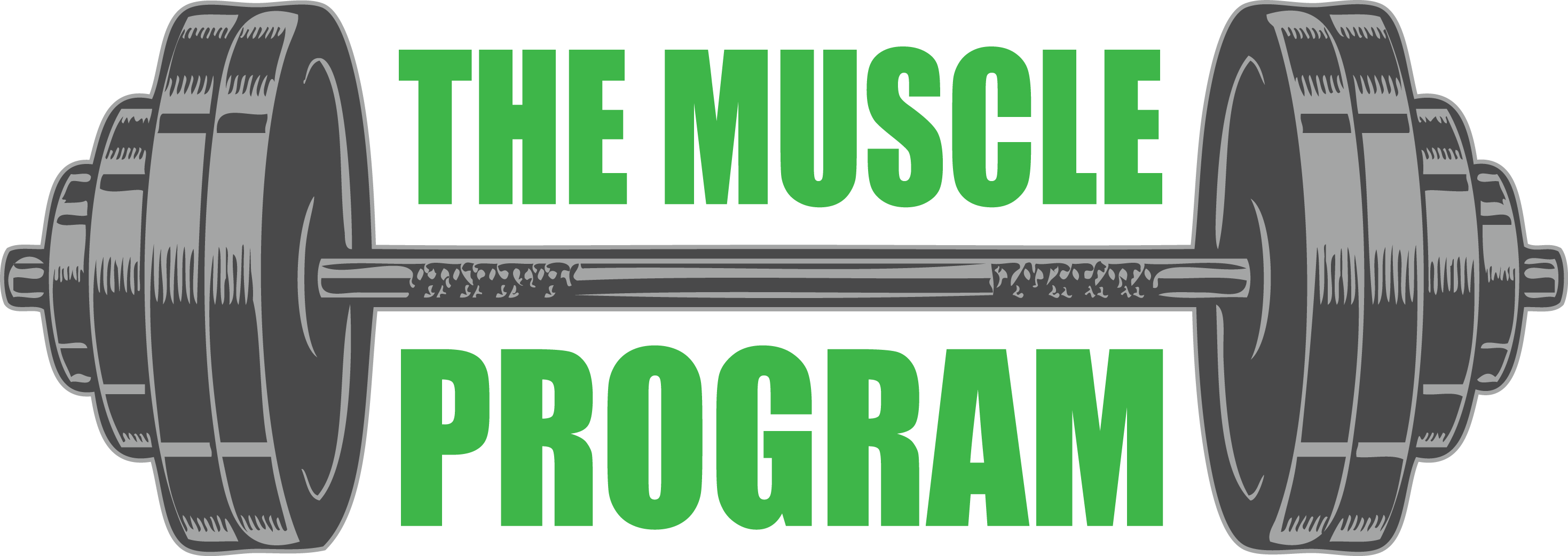No products in the cart.
Complete Guide: How to Use Periodization for Bodybuilding and Muscle Growth
September 29, 2020
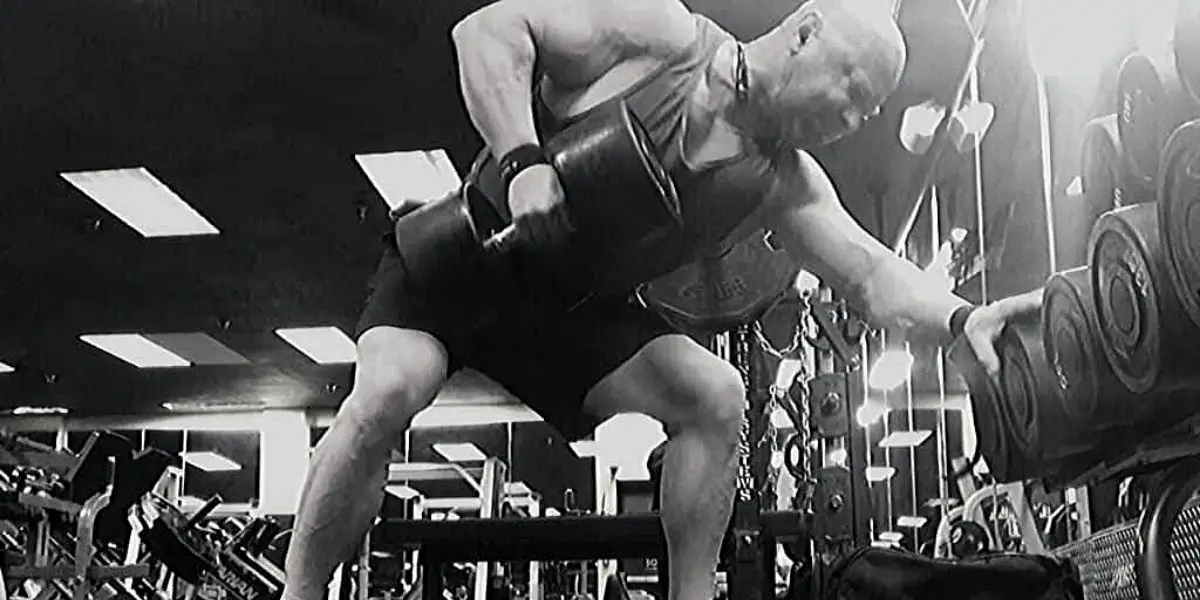
One of the most amazing experiences is seeing the results from all of the hard work you put into the gym. You’ve built some mass and you have some muscle definition…it’s an awesome feeling.
But as you know, that experience will only last for so long. At some point, you hit that inevitable plateau in your training.
So, what do you do when your muscles growth stops?
In this post, we’re going to dive deep into a method that can give you continuous gains. It’s called periodization.
Here’s what you’ll learn:
- What is periodization?
- Phases and cycles of periodization
- How periodization applies to bodybuilding
- History of periodization in bodybuilding
- Planning your training with the cycles of periodization
- A better way to use periodization
- COMPLETE BODYBUILDING PERIODIZATION PROGRAM
- Periodization recap and more tips
- Elite Periodization Program
What is Periodization?
The concept of periodization is based on Selye’s General Adaptation Syndrome (GAS). The originator, Hens Selye was performing research on the body’s response from stress, according to Garret Rieck and Justin Lindin, contributors to the article ‘Selye’s Concept of General Adaptation Syndrome.’
In the 1960s, Russian sports scientist Leo Matveyev proposed a periodization model for weight training. This model takes you through different levels of intensity and volume based on cycles and phases.
The idea behind periodization is to take your muscle growth and strength to a new level once you’ve adapted to a particular training style.
For example, you may be training heavy for strength. You’ll initially make gains but only to a certain point in which you hit a plateau. This is the time you would move on to the next phase of training.
**The graph below is a visual of how periodization works. This is from the Sports Journal article ‘Tools and Benefits of Periodization: Developing an Annual Training Plan and Promoting Performance Improvements in Athletes‘ by Michael B. Phillips, Jake A. Lockert, and LaNise D. Rosemond.

Planning Your Training with the Cycles of Periodization
Periodization is broken down into cycles. These elements are used to plan your program out for an entire year.
- Macrocycle
- Mesocycle
- Microcycle
The macrocycle is based on your overall goal for that phase. Here is where you need to really assess your end state of how you want your physique to look or how strong you want to be. The macrocycle is composed of the majority of your training phases (except for the final), which we’ll talk more about that later.
This is where you need to assess where you plan to be at the end of your training. You need to have a clear vision of what you’re training for and why. For example, as a bodybuilder creating your plan for a competition you may want to gain a certain amount of cycle while dropping your body fat to a specific range.
The mesocycle consists of several weeks. According to the article ‘Macrocycles, Mesocycles and Microcycles: Understanding the 3 Cycles of Periodization‘ on the Training Peaks website, this cycle is between two to six weeks.
Here is where you’re breaking up the different phases of periodization. You have a strength phase that last six weeks. That would be your mesocycle for that phase. Then you may move on to a phase that focuses on hypertrophy. That’s another mesocycle.
Your microcycle breaks your training down into more detail for that particular week, and day-to-day. This is where you need to plan out the actual workouts you’re doing each day, for each muscle.
Don’t let the concept of periodization overwhelm you. In short, you’re simply changing your workouts at certain points throughout the year in order to achieve more muscle gains.
I’m just giving you the basic background of it but we’re about to talk more about how this method applies to bodybuilding, and how you can use periodization to create your own routine for your goals.
How Periodization Applies to Bodybuilding
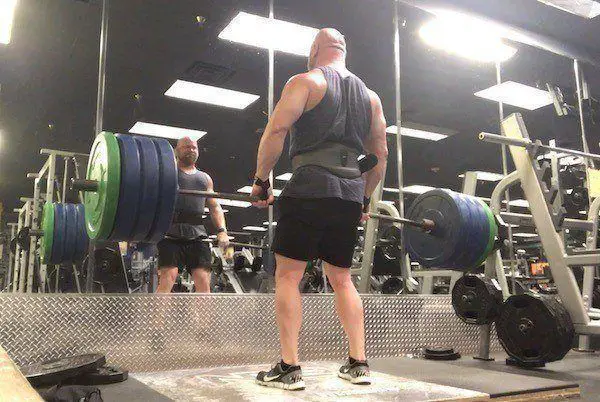
Periodization in bodybuilding essentially means planning out your workout routine with multiple phases to promote continuous muscle growth.
Think about the times when you started a new workout routine. You were stoked because of the gains you were making, right? Your muscles were sore, you got stronger, and you were looking more jacked up!
But what happened after about the fifth or sixth week of doing that same routine? You weren’t as excited as you were when you first started. And you were no longer making those same gains.
Here’s what happens when you stay on the same routine for an extended period of time:
- Your muscles adapt to the stress that you were putting them under.
- As a result, they stop responding.
- Or at least they stop responding in the same manner (meaning you may still make some progress but not at the same rate as you did when you started the new routine)
It’s not so much that your workout routine stopped working. In all reality, you could do the same workouts for the rest of your life. You would still maintain your physique and strength, and you would even make some progress along the way.
But that progress would be slow. And you would miss out on the potential muscle gains you would make by using periodization.
**There are seasons where we may just choose to maintain our physique, thus we may just stay on that same routine for a while.
But if that’s not the season you want to be in right now and you want to blast your way into new muscle growth, periodization is going to be your best friend, so keep reading…
The History of Periodization in Bodybuilding
Though the concept had been around long before bodybuilding became popular, let’s go back to the golden era of bodybuilders. In fact, we’re going to talk about who many consider the godfather of bodybuilding and fitness. Joe Weider.
Joe Weider developed a set of methods to enhance muscle growth and hypertrophy called The Weider Principles. One of the core principles is based on muscle confusion.
Joe knew that the muscle would adapt to certain exercises, sets, and reps (or rather, levels of stress). So he would change up the workouts often for his bodybuilders.
**You can read more about The Weider Principles in Jim Stoppani’s article ‘Remembering Joe Weider: The Science Of The Weider Principles‘ on the bodybuilding.com website.
Now, you have to remember this was an era that didn’t have the advanced supplements and drugs that modern-day bodybuilders have. And even those who partook in some of the enhancements available used much lower doses than what we see today.
Bodybuilders like Arnold Schwarzenegger, Lou Ferrigno, Frank Zane, Sergio Oliva, Robby Robinson, Lee Haney, Franco Columbo, and countless others…these guys had to rely more on training than substances.
That said, periodization was a crucial part of the success of the bodybuilders. They knew that they would hit a peak on their training and needed to be able to break past those plateaus. So they would make changes to their workout routines to shock their muscles into growth.
**Some consider the Golden Era of Bodybuilding to have been between the 1950s and 1970s. per Ernst Peibst’s article ‘The Golden Era of Bodybuilding: Why Did They Look Better?’ on Inside Bodybuilding website. However, many also consider the 80s to be part of the Golden Era.
Here’s an image below from this website:

Phases of Periodization for Bodybuilding
The culprit of periodization is the different phases in your training. In other words, you’ll change your workout routine for each phase.
Keats Snideman lists five phases of periodization in his article ‘Periodization for Bodybuilders‘ on the bodybuilding.com website used for the approach of linear progression. This is the westernized version of periodization below (I’m going to give you a better version later!):
- Phase 1: Hypertrophy
- Phase 2: Strength
- Phase 3: Power
- Phase 4: Peaking
- Phase 5: Active Rest
In the beginning, starting with the hypertrophy phase, your reps are overall training volume is higher using less weight. As you progress into the strength, power, and peaking phases, you’re lifting heavier weights with lower reps.
At the end, the active rest phase, you’re doing what many call deloading. This is where your intensity is brought back down, essetnially giving your body, muscles, and joints a rest.
**You can read more about deloading in my post: Deload Workouts: How to Back Off for More Muscle Gains
A Better Way to Use Periodization for Bodybuilding
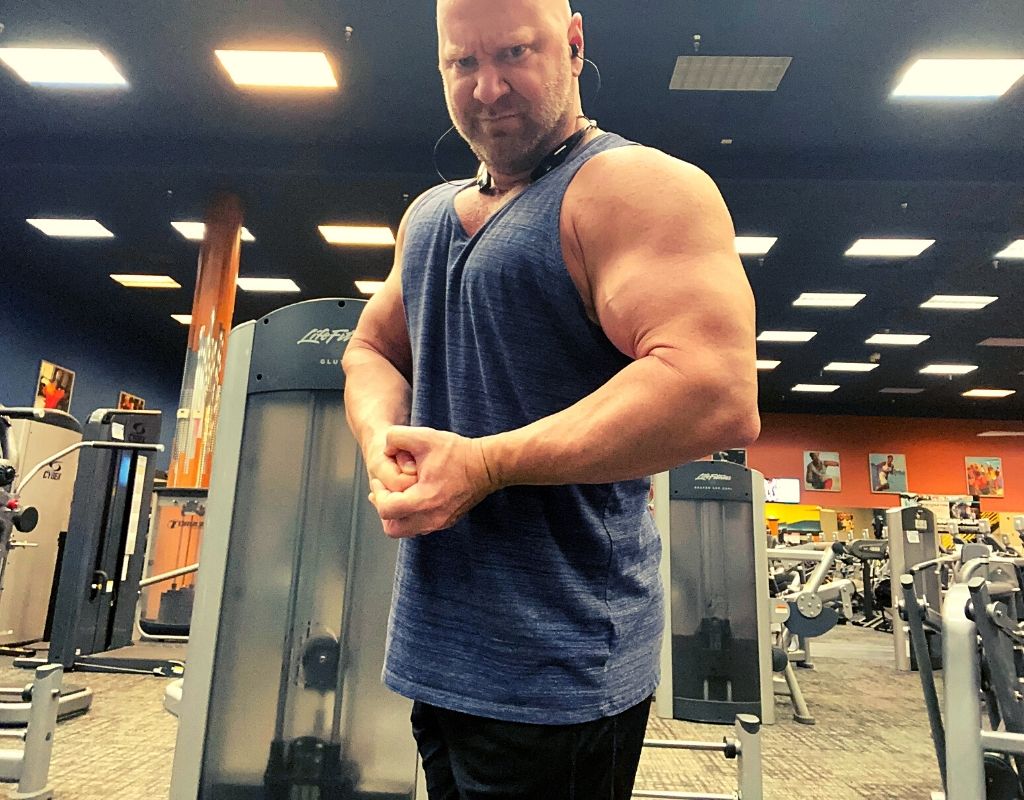
At this point, you’ve got a good understanding of what periodization is and how it applies to build more muscle. Again, it’s simply a matter of planning out your training strategy by switching up your workouts periodically. That’s it in a nutshell.
Now, I want to show you what may prove to be a better way to use periodization for bodybuilding. You saw the phases listed above but we’re going to rearrange that to make more sense for linear progression.
Here are my periodization phases for attaining a bodybuilder physique:
- Phase 1: Strength
- Phase 2: Mass
- Phase 3: Hypertrophy
- Phase 4: Cutting
- Phase 5: Deload
What’s better about this bodybuilding periodization plan?
For starters, increasing your strength is going to be your foundation for the rest of your program. The stronger you are, the more you’re capable of overloading your muscles. If you focus on strength gains in the first training phase, you’ll be stronger for your remaining phases.
From strength, you move on to a mass-building phase. You’re still lifting heavy but you’re also starting to incorporate some isolation exercises.
In the hypertrophy phase, you’ll continue to start your workout with heavy compound movements but you’re going to be increasing your reps and volume for the remainder of your workouts. The goal here is to pump more blood into your muscles.
The final working phase of your periodization program is where you’ll focus on getting shredded and bringing out those striations. This is also the point where you’ll be paying close attention to cutting body fat.
Lastly, you’ll end with what’s called a deloading phase. This is simply put in place to give your body a break. You can still train but your workouts will be shorter and not as intense for a few weeks.
Here’s an example of a timeline you can use for this periodization program:
| Phase | Goal | Duration |
|---|---|---|
| Phase 1 | Strength | 2-3 months |
| Phase 2 | Mass | 2-3 months |
| Phase 3 | Hypertrophy | 2-3 months |
| Phase 4 | Cutting | 2-3 months |
| Phase 5 | Deload | 2-3 weeks |
Periodization Bodybuilding Workout Program
Here’s where the real fun begins! I’m going to give you a complete periodization program based on the phases we just went over.
And this program could last you for an entire year!
This will be at a high-level. The goal here to simply give you a guide, or a template to use to create a program that caters to your goals and what you have access to at your gym.
**Before you get started, make sure you check out my #1 pre-workout that gives you extreme mental focus and energy in this post: Jason’s Alpha Lion Superhuman Experience (HULK JUICE)
Phase 1: Strength Gains Workouts
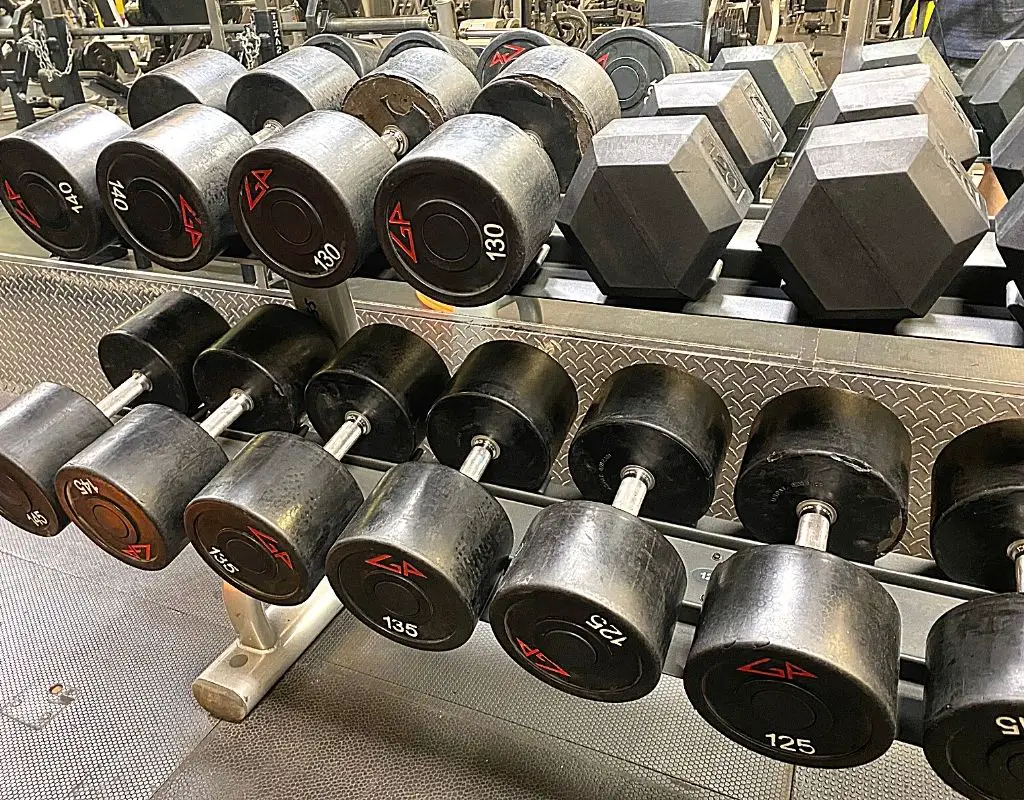
2-3 months
The first phase in this periodization for bodybuilding program is going to focus on building up strength on your compound lifts: squats, deadlifts, bench press, overhead press, and barbell rows.
It’s going to look similar to a powerlifting program. And it’s similar to the 5 x 5 method. However, you will be adding some exercises for hypertrophy (and this will be the case for all phases, as that’s really your ultimate goal).
The routine calls for 4-days a week. Here’s an example of your training split for strength gains:
- Monday: Back and Hamstrings
- Tuesday: Chest and Triceps
- Wednesday: rest
- Thursday: Quads and Biceps
- Friday: Shoulders and Back
- Saturday: rest
- Sunday: rest
Now, let’s get to your workouts for the strength gains phase below…
Strength Workout 1: Back and Hamstrings
- Deadlifts: 5 x 5
- Barbell rows: 5 x 5
- Lat pulldowns: 3 x 8
- Lying leg curls: 3 x 8
Strength Workout 2: Chest and Triceps
- Bench press: 5 x 5
- Incline bench press: 3 x 8
- Incline dumbbell flyes: 3 x 8
- Skull crushers: 3 x 8
Strength Workout 3: Quads and Biceps
- Squats: 5 x 5
- Leg press: 3 x 12
- Leg extensions: 3 x 12
- Standing or seated calve raises: 5 x 15-20
- EZ Bar curls: 3 x 8
Strength Workout 4: Shoulders and Back
- Seated barbell press: 5 x 5
- Lateral raises: 3 x 8
- Reverse-grip barbell rows: 3 x 8
- Dumbbell rows: 3 x 8
**If you’re serious about getting stronger, be sure to check out the Critical Bench 2.0 Program
Phase 2: Mass Gains Workouts
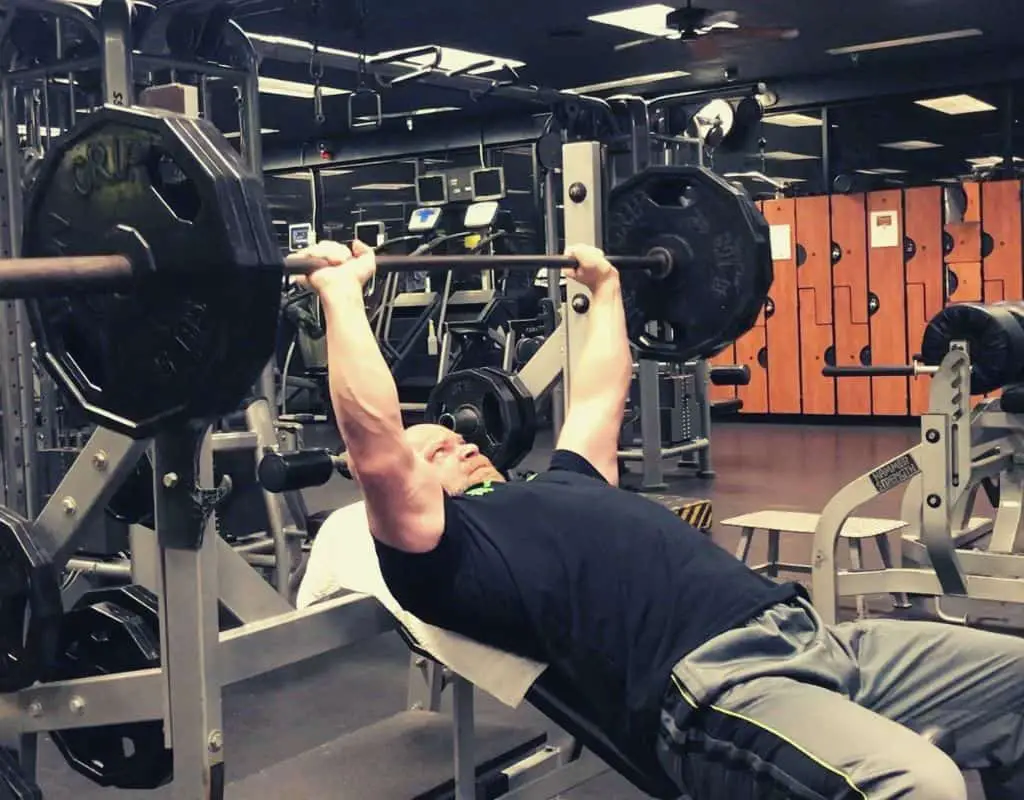
2-3 months
At this point, you’re a lot stronger and moving some heavy metal! Now it’s time to start adding more exercise to train your muscles from a variety of angles.
You’ll still lift heavy in the beginning, so don’t worry…you’re not going to lose strength in this phase. But your goal now is starting to shift from strength to adding muscle size (which being stronger will help you pack on some serious size!).
You’ll be sticking to the same training format, 4-days a week. Here’s an example of your training split for mass gains:
- Monday: Back and Triceps
- Tuesday: Legs
- Wednesday: rest
- Thursday: Chest and Biceps
- Friday: rest
- Saturday: Shoulders and Quads
- Sunday: rest
**Friday is a rest day so that you’re not training shoulders the day after chest.
Here are your workouts for the mass gains phase below…
Mass Workout 1: Back and Triceps
- Barbell rows: 5 x 8, 8, 6, 6, 3
- Dumbbell rows: 4 x 8
- T-bar rows: 4 x 10
- Seated rows: 3 x 10
- Lat pulldowns: 3 x 10
- Seated overhead dumbbell extensions: 3 x 10
- Cable Pressdowns: 3 x 10
Mass Workout 2: Legs
- Squats: 5 x 8, 8, 6, 6, 3
- Leg press: 5 x 12
- Romainian deadlifts: 4 x 10
- Leg extensions: 3 x 12
- Leg curls: 3 x 12
- Seated or standing calves raises: 5 x 15-20
Mass Workout 3: Chest and Biceps
- Incline bench press: 5 x 8, 8, 6, 6, 3
- Dumbbell press: 4 x 8
- Incline dumbbell flyes: 4 x 10
- Dumbbell pullovers: 3 x 10
- Dumbbell hammer curls: 3 x 10
- Barbell curls: 3 x 10
Mass Workout 4: Shoulders and Quads
- Seated barbell press: 5 x 8, 8, 6, 6, 3
- Seated dumbbell press: 3 x 10
- Lateral raises: 3 x 8
- Front squats: 3 x 8
- Single-leg extensions: 3 x 12
**There’s a reason you’re hitting your legs twice a week. Legs are your largest muscle and often the most neglected, sadly. It’s important to give your legs more attention and never let your upper body overshadow your lower body.
You can read more about twice-a-week leg training in my post: Training Legs Twice a Week: How to Build Bigger Legs
Phase 3: Hypertrophy Workouts
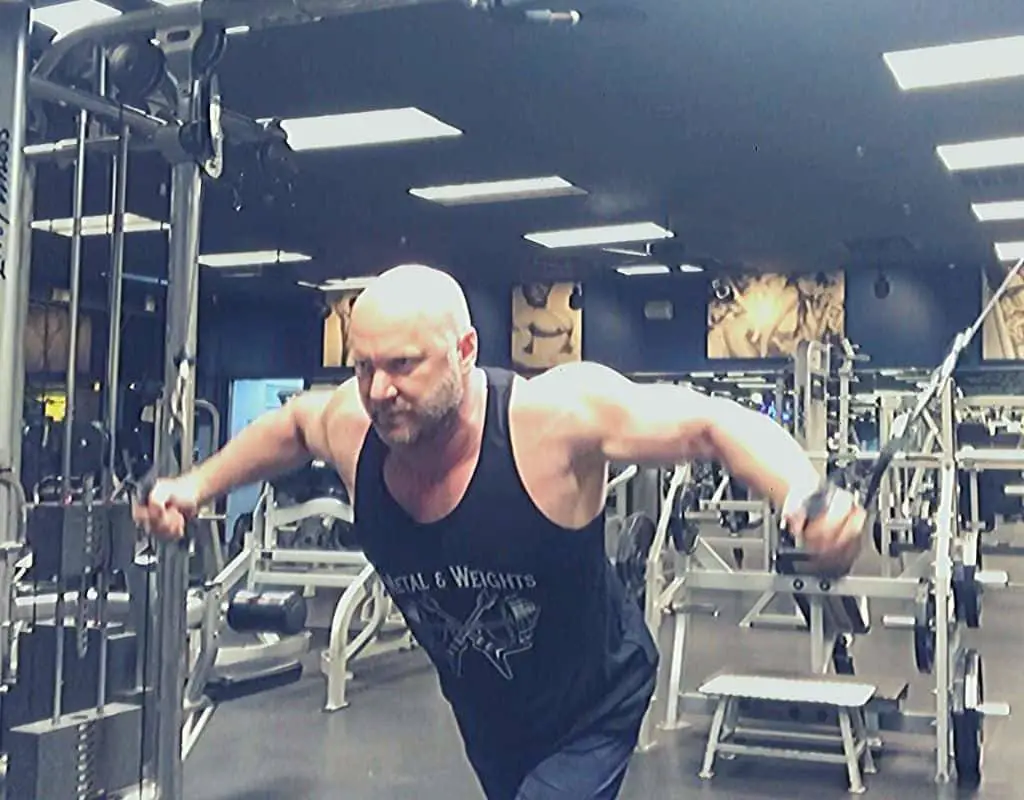
2-3 months
During your hypertrophy phase, you’re going to add another workout day so you’ll be training 5 days a week.
This phase is going to be all about two things:
- Forcing your muscles to work harder
- Feeling the pump
You’ll still maintain some of the compound exercises you’ve been doing in the strength and mass phases. But you’re going to be increasing the reps and adding more exercises that target your muscles directly.
Here’s an example of your training split for hypertrophy:
- Monday: Back and Rear Delts
- Tuesday: Legs
- Wednesday: Chest and Delts
- Thursday: Arms
- Friday: Legs and Back
- Saturday: rest
- Sunday: rest
Here are your workouts for hypertrophy below…
Hypertrophy Workout 1: Back and Rear Delts
- Barbell rows: 4 x 8
- Dumbbell rows: 4 x 10
- Seated rows: 4 x 12
- T-bar rows: 3 x 15
- Bent-over raises: 5 x 10-12
Hypertrophy Workout 2: Legs
- Squats: 4 x 8
- Leg press: 4 x 12
- Hack squats: 4 x 12
- Leg extensions: 4 x 12-15
- Leg curls: 4 x 12-15
- Calve raises: 5 x 20
Hypertrophy Workout 3: Chest and Delts
- Incline bench press: 4 x 8
- Dumbbell press: 4 x 10
- Cable flyes extensions: 4 x 12
- Hamer Strength (or machine) Press: 3 x 15
- Seated dumbbell (Arnold) press: 3 x 10
- Lateral raises: 3 x 12
Hypertrophy Workout 4: Arms
- EZ bar curls: 4 x 10
- Skull crushers: 4 x 10
- Alternate curls: 3 x 12
- Single-arm cable pressdowns: 3 x 12
- Single-arm cable curls: 3 x 12-15
- Reverse overhead rope extensions: 3 x 12-15
Hypertrophy Workout 5: Legs and Back
- Single-leg press: 4 x 12
- Single-leg extensions: 4 x 15
- Single-leg curls: 4 x 15
- Reverse-grip pulldowns: 3 x 12-15
- Wide-grip seated rows: 3 x 12-15
**In my personal programs, I’m normally training legs and back twice a week. As I mentioned earlier about legs, the same goes for back.
Your back in your largest upper body muscle. So it needs more attention than chest and shoulders, which are much smaller muscles in comparison.
This is getting more into an elite style of training. On that note, I encourage you to take a look at my Hardcore Muscle Building Program.
Phase 4: Cutting Workouts
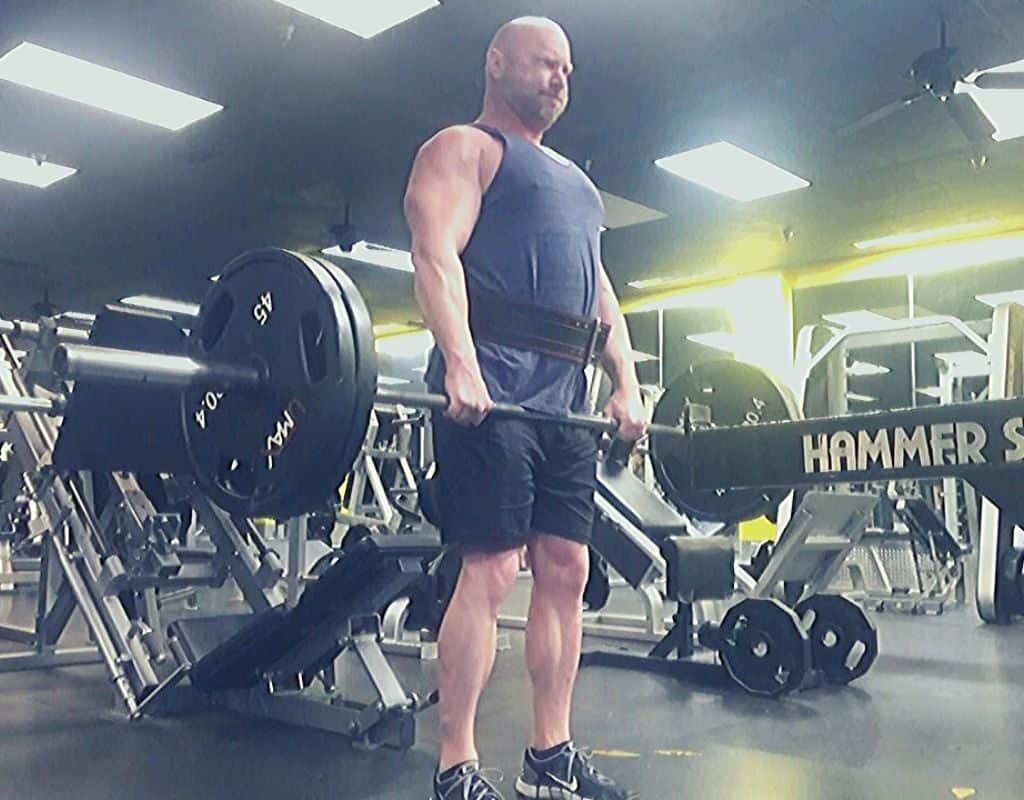
2-3 months
Now it’s time to take the mass you’ve built and sculpt it. In this final working phase (the actual final phase will be deloading), your goal is to get cut and shredded.
You want to attain muscle definition and see those striations. And to do that, you’ve got to bump up your training intensity.
The focus of your workouts will be getting a deeper level of muscle contractions while pumping more blood into the muscle. You’re also going to have a focus on burning fat during your workouts.
That said, you’re going to be training six days a week. This is going to take more effort and dedication, but you can do it.
One more thing you’ll notice…you’ll be starting every workout with pre-exhaust training. This means doing an isolation exercise first, which will help you feel your muscles more throughout the rest of your workout.
Here’s an example of your training split for cutting:
- Monday: Back and rear delts
- Tuesday: Chest and delt
- Wednesday: Legs
- Thursday: Back and biceps
- Friday: Chest and triceps
- Saturday: Legs
- Sunday: rest
Here are your workouts for getting lean and shredded below…
**You may also want to check out my Lean Muscle Building Program!
Cutting Workout 1: Back and Rear Delts
- Lat pulldowns: 4 x 10-12
- Barbell rows: 4 x 12
- Single-arm seated rows: 4 x 12-15
- Cable pullovers: 4 x 15
- Reverse pec-dec: 5 x 15
Cutting Workout 2: Chest and Delts
- Pec-dec flyes: 4 x 10-12
- Incline bench press: 4 x 12
- Hammer Strength (or machine) press: 4 x 12-15
- Cable flyes: 4 x 15
- Single-arm raises: 5 x 15
Cutting Workout 3: Legs
- Leg extensions: 3 x 15
- Squats: 4 x 10
- Seated leg curls: 4 x 12
- Leg press: 5 x 15
- Hack squats: 4 x 12-15
- Seated calve raises: 5 x 15-20
Cutting Workout 4: Back and Biceps
- Close-grip pulldowns: 4 x 10-12
- Wide-grip seated rows: 4 x 12
- Hammer Strength high (or machine) rows: 4 x 12-15
- Preacher curls: 4 x 12
- Incline dumbbell curls: 4 x 15
Cutting Workout 5: Chest and Triceps
- Cable flyes: 4 x 10-12
- Incline dumbbell press: 4 x 12
- Dumbbell pullovers: 4 x 12-15
- Single-cable pressdowns flyes: 4 x 12
- Rope pressdowns: 4 x 15
Cutting Workout 6: Legs
- Lying leg curls: 4 x 12
- Front squats: 4 x 12
- Romanian deadlifts: 4 x 12
- Single-leg press rows: 3 x 15
- Single-leg extensions: 3 x 15
- Standing calve raises: 5 x 15-20
**It’s a no-brainer that to burn body fat while maintaining hard-earned muscle, you have to pay close attention to your nutrition.
The one source that has helped me is a particular meal prep guide called Anabolic Cooking. You can read more about Anabolic Cooking in this post: Over 200 Bodybuilding Meals and Recipes
Phase 5: Deload Workouts
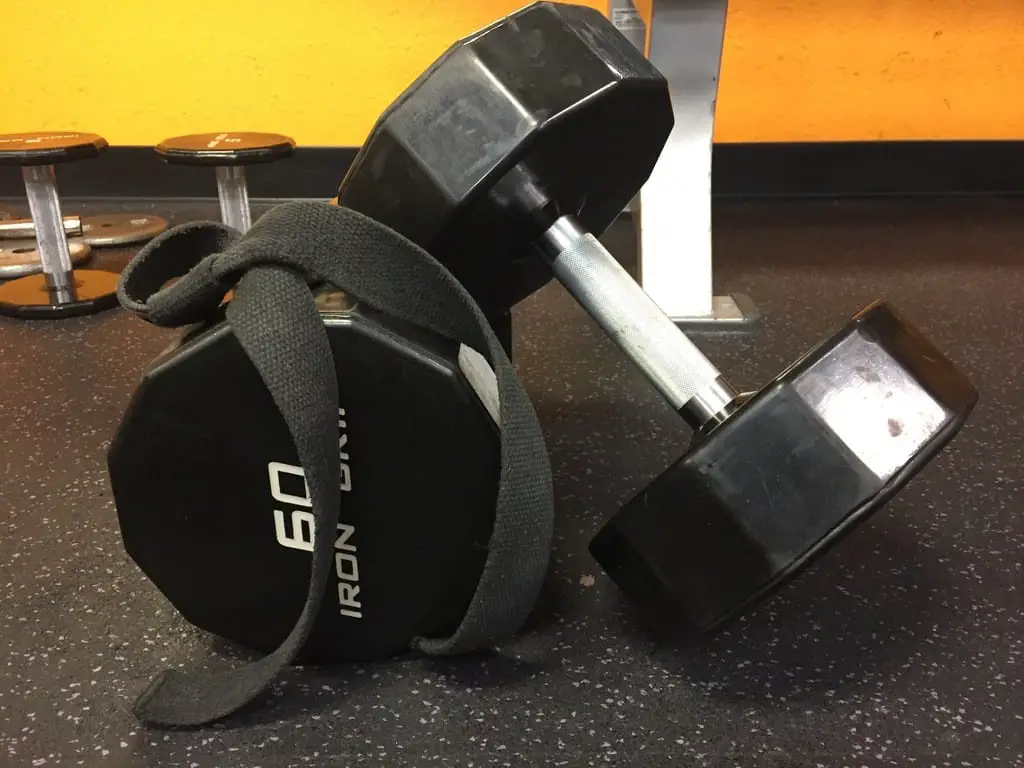
2-4 weeks
You’ve completed the actual program so the next phase is called the deload phase. This is usually a few weeks of just going through the motions in the gym.
The goal here is to simply maintain while giving your body a rest. So your workouts are going to easy, less volume, and less intensity.
Enjoy it while it lasts!
Here’s an example of your training split for deloading:
- Monday: Push (chest, delts, triceps)
- Tuesday: rest
- Wednesday: Pull (back, rear delts, biceps)
- Thursday: rest
- Friday: Legs
- Saturday: rest
- Sunday: rest
Below are your deload workouts…
Deload Workout 1: Push
- Dumbbell press: 3 x 10
- Incline flyes: 3 x 10
- Lateral raises: 3 x 10
- Rope pressdowns: 3 x 10
Deload Workout 2: Pull
- Lat pulldowns: 3 x 10
- Seated rows bench press: 3 x 10
- Reverse pec-dec: 3 x 10
- Dumbbell curls: 3 x 10
Deload Workout 3: Legs
- Leg press: 3 x 12
- Leg extensions: 3 x 12
- Leg curls: 3 x 12
- Calf raises: 3 x 15
Periodization Recap and More Tips
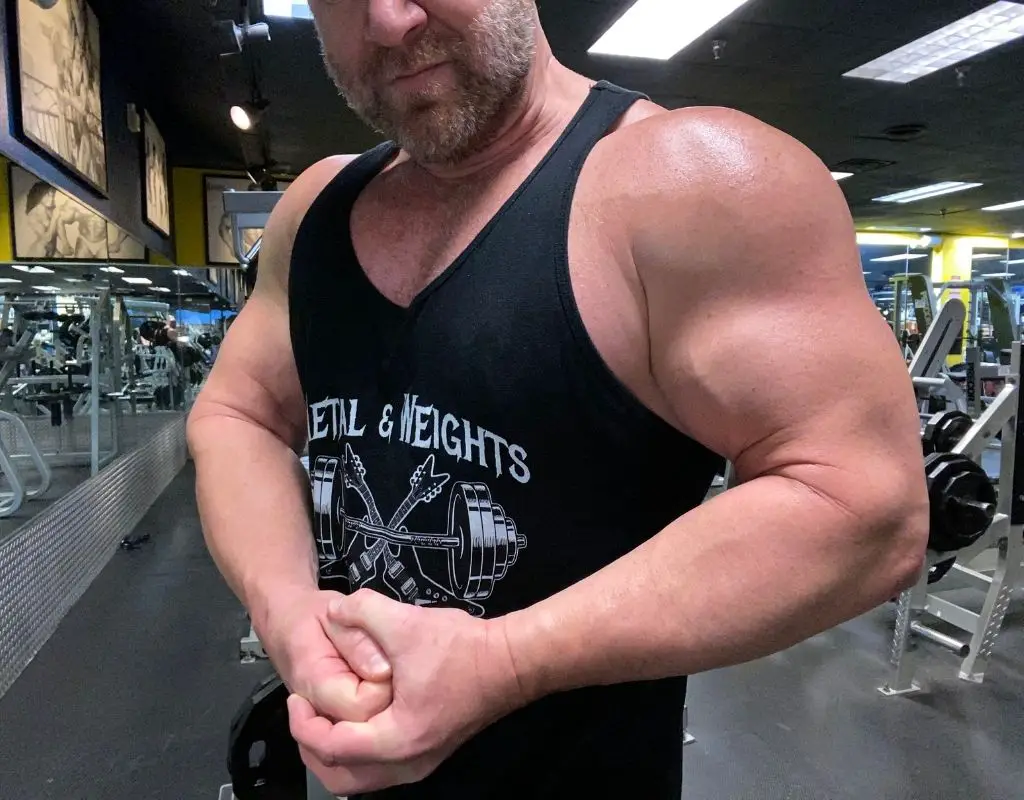
One of the problems with classic periodization-style programs is many believe you have go from one extreme to another. But what I’ve learned is that you don’t have to completely change your entire workout routine.
But as you can see from the entire program you just read, you don’t have to make extreme changes to boost your potential for muscle growth. You can make gains by just making subtle changes.
Here are some of the changes we made above in the program (and you can even apply these to your current workout routine if you’re stuck in a rut):
- Gradually increase the reps
- Add 1-2 new exercises without taking away the core exercises
- Make a slight change in the order of exercises (like we did in Phase 4 by adding the pre-exhaust exercise)
- Add an extra workout day
- Slightly increase (or decrease) your overall training volume
- Back off on the intensity (like we did in Phase 5 for deloading)
You saw all of these changes in the periodization bodybuilding routine. But there were no extreme changes from one phase to another. Rather, it was a gradual progression.
That’s not to say you can’t make extreme changes. You certainly can!
For example, you may want to go from Phase 1 (strength) to Phase 4 (cutting), skipping the mass and hypertrophy phases.
That’s okay. The important thing to remember is to be consistent with your workouts. And give 100% every time you step into the gym.
Elite Periodization Program
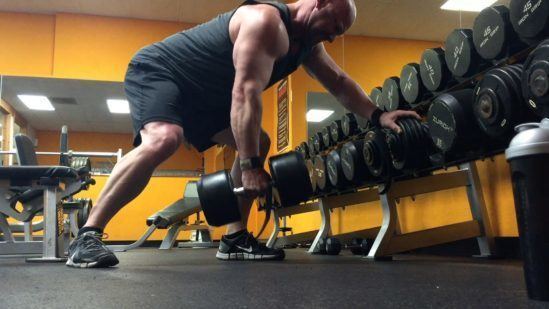
This workout routine you got in this post is just one example of how you can use the concept of periodization. Remember, don’t overcomplicate it.
Just stick to the phases making enough subtle changes to your workouts so that you shock your muscles into continuous growth. This is the idea behind my Hardcore Muscle Building Program.
Hardcore Muscle Building Program is one of my elite 12-week programs that’s designed for continuous muscle growth.
There’s also a nutrition plan and supplement guide within the program, and a section on enhancing your mind-muscle connection so that you can make even more progress.
You can read more about this program here: Hardcore Muscle Building Program
I truly hope that this post helps you understand what periodization is and how you can use it to make more muscle gains.
Now it’s time to hit the gym…
Train with Passion,
Jason
